CEEK 4D Headphones by Dave Thomas
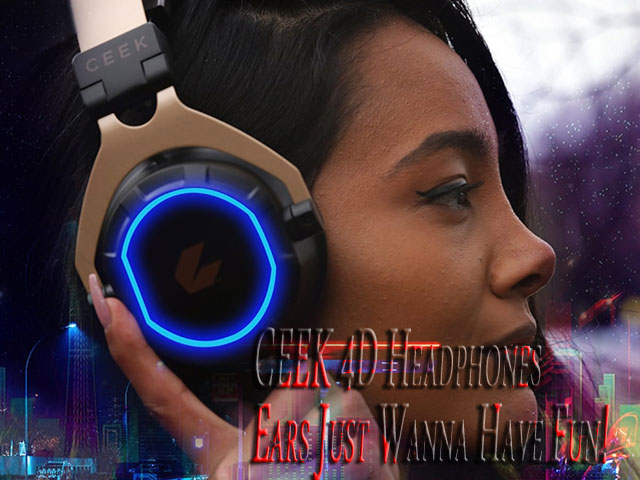
 In my professional life, I’m what is known as a supplier diversity manager. In short, I help women and minority business owners create mutually beneficial relationships with corporate and government buying organizations. One of my clients is a P.R. firm called Ten35. One of the owners of Ten35 is a gentleman named Sherman Wright. One day late last year, I invited Sherman to come by my office to discuss an opportunity to provide P.R. services for the National Basketball Association’s “2020 NBA All-Star Game” in Chicago. During the meeting, he asked me about Stereo Times and if I’d ever heard of a woman named Mary Spio. I said I hadn’t, and without saying another word, he proceeded to call up a YouTube video about her. It quickly became apparent that the name Mary Spio would be one that I would not soon forget.
In my professional life, I’m what is known as a supplier diversity manager. In short, I help women and minority business owners create mutually beneficial relationships with corporate and government buying organizations. One of my clients is a P.R. firm called Ten35. One of the owners of Ten35 is a gentleman named Sherman Wright. One day late last year, I invited Sherman to come by my office to discuss an opportunity to provide P.R. services for the National Basketball Association’s “2020 NBA All-Star Game” in Chicago. During the meeting, he asked me about Stereo Times and if I’d ever heard of a woman named Mary Spio. I said I hadn’t, and without saying another word, he proceeded to call up a YouTube video about her. It quickly became apparent that the name Mary Spio would be one that I would not soon forget.
Mary Spio
That YouTube video, which was only about seven minutes long, told the story of a woman born in America but raised in her parent’s home country of Ghana, Africa. She would return to the states as a teen before eventually joining the U.S. Air Force, where she became a satellite technician. She was adept at working with electronics, that one of the engineers she served with suggested that she consider going to college to become an electrical engineer. Soon she was attending school at Syracuse University, where she earned a Bachelor’s degree in Engineering before going on to Georgia Tech, where she earned her Master’s in Electrical Engineering and Computer Science.
After college, she began working as a deep space engineer, designing numerous satellites sent into space. Spio’s work included projects for NASA, SETI (Search for Extraterrestial Intelligence), Aerospace Corporation (The company that provides technical guidance and advice on all aspects of space missions to the military), and IntelSat. Her work culminated in her becoming the head of satellite communications at Boeing. One of her most significant accomplishments was developing the technology that now allows motion picture studios to distribute feature films to movie theaters digitally via satellite. She is a patent holder for this technology.
Today, Mary Spio owns CEEK VR, Inc., a company that produces Virtual Reality (V.R.) content for the music, sports, education, and healthcare industry. She has partnerships with companies such as Universal Music Group, T-Mobile, and Apple, which allows her to produce V.R. content with some of the biggest names in the entertainment industry. People such as Jon Bon Jovi, Lady Gaga, Elton John, Demi Lovato, and Ziggy Marley are just a few of the acts that have created V.R. content for the CEEK VR platform.
To maximize the enjoyment of this content, Spio has developed the CEEK 4D headphones ($250.00) as well as the CEEK Virtual Reality Headset (the goggles that allow you to view the V.R. content). Always wanting to support a small business owner, I ordered a pair of these headphones from the CEEK VR website. A matter of days later, they arrived. As I began to unpack them, I was impressed by how well packaged the headphones were. Taking the top cover off the box reveals an elegant case that sits inside a black foam rubber cut-out. Inside of the case is the headphones and accessories. On the inside of that top cover is, interestingly enough, a letter from Spio herself, where she thanks the new owner for buying her innovative product. A nice touch.
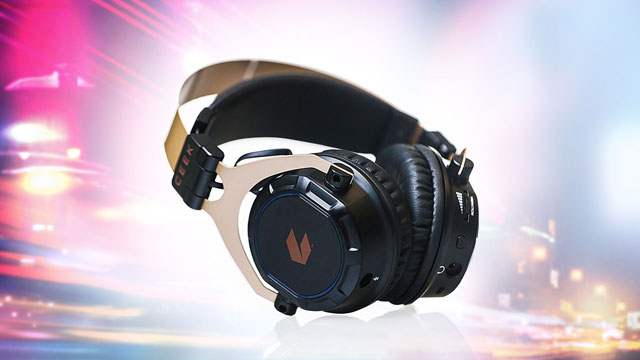
About the CEEK 4D Headphones
 The first thing to understand about these headphones is what is meant by “4D.” According to Spio, the CEEK 4D headphones use 3D audio technology and haptic feedback to create rich, engulfing 4-Dimensional soundscapes so that you can hear and feel games, music, and movies in a completely new way. By visualizing sound and adding haptic feedback based on audio intensity, the CEEK 4D headphones can create differences in acoustic characteristics of space in which a wave exists. These variations enable the auditory system to accurately reproduce depth, range, perspective, and distance of sound, close to how it existed in the actual originating environment.
The first thing to understand about these headphones is what is meant by “4D.” According to Spio, the CEEK 4D headphones use 3D audio technology and haptic feedback to create rich, engulfing 4-Dimensional soundscapes so that you can hear and feel games, music, and movies in a completely new way. By visualizing sound and adding haptic feedback based on audio intensity, the CEEK 4D headphones can create differences in acoustic characteristics of space in which a wave exists. These variations enable the auditory system to accurately reproduce depth, range, perspective, and distance of sound, close to how it existed in the actual originating environment.
Visually, the CEEK headphones are impressive looking over-the-ear designs that come in either a black, gold, or a black and gold two-tone finish. The right side earcup holds the basic control functions (+/- volume, forward, reverse, pause and play), and it also has the vibration control, power button, and a mini-USB input for charging. The vibration control is part of the haptic feedback system that allows you to feel the intensity and energy of even the music’s deepest bass. The headphones connect to your device via Bluetooth, but there is also an input to have a wired connection. The left earcup has the CEEK logo on it and an input for the omnidirectional mic, which is primarily used for gaming. The earcups are made of shock-resistant plastic (I’d k, now. I dropped them enough times.) and have foam rubber pads that were very comfortable on my ears. The CEEK has a two-piece headband. The outer band is made of aluminum but is flexible enough to accommodate most any size head (even my brother’s). The inner band is the same foam rubber as the earcups and, overall, makes for a very comfortable fit. The earcups also have LEDs on them to indicate power-on (blue) and power-off (red).
In my setup, I connected the CEEK to my trusty old TEAC UD H01 DAC/Headphone amp, and I connected the TEAC to my MacBook Pro via an Entreq Konstantin USB cable. Most of my listening was done from my Apple Music account.
Music Please
 So now, what did they sound like on music? To begin with, the CEEK 4Ds produce a HUGE soundstage. This is something that is very much appreciated when listening to live music recorded in vast spaces. The first recording of note that I listened to was Kenny Loggins’ Outside: From the Redwoods [Sony Legacy]. This concert was recorded live in June of 1993 at the Shakespeare Santa Cruz Music Festival, amongst the Redwood trees of Santa Cruz, CA. My favorite song from this recording is an acoustic version of “This Is It.” The CEEK heaphones do a remarkable job of rendering the outdoor space yet still gives you a lot of the subtleties of the onstage performance, particularly Loggins’ vocals, which at times can be barely above a whisper. “Love Will Follow,” a duet with R&B songstress Shanice, is another excellent example of performing in a large space but still being able to enjoy a low-key performance like this one. The CEEK headphones can be a bit on the bass-heavy side, which I’ve come to accept that, culturally, it is merely a personal preference. My wife listened to them and said, “finally, you’re listening to something with some bass to it.” Fear not; putting the vibration control in the flat position helps minimize the feeling of over-saturated bass. On recordings such as this, it has the effect of adding or subtracting subwoofers.
So now, what did they sound like on music? To begin with, the CEEK 4Ds produce a HUGE soundstage. This is something that is very much appreciated when listening to live music recorded in vast spaces. The first recording of note that I listened to was Kenny Loggins’ Outside: From the Redwoods [Sony Legacy]. This concert was recorded live in June of 1993 at the Shakespeare Santa Cruz Music Festival, amongst the Redwood trees of Santa Cruz, CA. My favorite song from this recording is an acoustic version of “This Is It.” The CEEK heaphones do a remarkable job of rendering the outdoor space yet still gives you a lot of the subtleties of the onstage performance, particularly Loggins’ vocals, which at times can be barely above a whisper. “Love Will Follow,” a duet with R&B songstress Shanice, is another excellent example of performing in a large space but still being able to enjoy a low-key performance like this one. The CEEK headphones can be a bit on the bass-heavy side, which I’ve come to accept that, culturally, it is merely a personal preference. My wife listened to them and said, “finally, you’re listening to something with some bass to it.” Fear not; putting the vibration control in the flat position helps minimize the feeling of over-saturated bass. On recordings such as this, it has the effect of adding or subtracting subwoofers.
 The next noteworthy recording was Gretchen Parlato’s fantastic, Live In NYC [ObliqSound]. Every track on this recording is excellent. If you’re not familiar with this jazz vocalist, you must hear her. Everything about this recording is intimate. Not only is the venue small, with seats just inches away from the stage, but Parlato’s voice is so lite that she often can barely be heard above her dynamic band. Speaking of which, playing piano on the recording is none other than Taylor Eigsti, easily one of the best contemporary jazz pianists I’ve ever heard. “Butterfly,” the opening track, begins with Parlato using her handclap and scatting skills to perfection. When Eigsti on piano, Alan Hampton on bass, and drummer Mark Guilliana slowly merge with her vocals, you become hooked and cannot stop listening until the last track is over. What’s cool about how the CEEK headphones render this music is that all of the instruments hold their natural character and do not overwhelm Parlato’s voice. Not even the bass, of which there is a lot, sounds natural. That’s a pretty neat trick for headphones that are also designed to allow gamers to experience gun blasts, car crashes, and all manner of subterranean bass energy. Parlato’s cover of the R&B hit, “Weak,” is another fine example of how well these headphones swing from lite vocal passages to the dynamic strengths of her band. On this track, they each get a solo, and they’re fabulous to listen to. As a bonus, you can also watch this performance on YouTube. That allows you to see how well these headphones render the soundstage.
The next noteworthy recording was Gretchen Parlato’s fantastic, Live In NYC [ObliqSound]. Every track on this recording is excellent. If you’re not familiar with this jazz vocalist, you must hear her. Everything about this recording is intimate. Not only is the venue small, with seats just inches away from the stage, but Parlato’s voice is so lite that she often can barely be heard above her dynamic band. Speaking of which, playing piano on the recording is none other than Taylor Eigsti, easily one of the best contemporary jazz pianists I’ve ever heard. “Butterfly,” the opening track, begins with Parlato using her handclap and scatting skills to perfection. When Eigsti on piano, Alan Hampton on bass, and drummer Mark Guilliana slowly merge with her vocals, you become hooked and cannot stop listening until the last track is over. What’s cool about how the CEEK headphones render this music is that all of the instruments hold their natural character and do not overwhelm Parlato’s voice. Not even the bass, of which there is a lot, sounds natural. That’s a pretty neat trick for headphones that are also designed to allow gamers to experience gun blasts, car crashes, and all manner of subterranean bass energy. Parlato’s cover of the R&B hit, “Weak,” is another fine example of how well these headphones swing from lite vocal passages to the dynamic strengths of her band. On this track, they each get a solo, and they’re fabulous to listen to. As a bonus, you can also watch this performance on YouTube. That allows you to see how well these headphones render the soundstage.
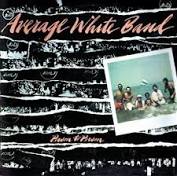 With their ability to throw a vast stage and accurately reproduce the scale of a venue while still letting you enjoy fine details, these are headphones that are a lot of fun to listen with. And when it comes down to it, nothing says fun like the Average White Band’s live album, “Person to Person” [Atlantic]. This album is a blast. It’s loaded with deep bass powered funk and one of the best horn sections you’ll ever hear in an R&B band. This was a recording that I just cranked up the volume and the vibrations and got my groove on. Growing up on the southside of Chicago in the ’70s, there were no skating rinks I visited that wasn’t pumping this music out. Two songs, in particular, stand out. The first is, “I’m the One.” A slick little guitar intro leads to that slamming horn section and one of the coolest bass lines ever. The CEEK headphones handle it all without any stress while still maintaining the musicality. The second song is the Chicago steppers anthem, “School Boy Crush.” The intro on this song features a set of jingle bells and another slick little guitar line that runs thru the balance of the song and is bolstered throughout by more great bass and the band’s underappreciated blues vocals. To show you how great this album is, I haven’t even talked about classics like “Cut the Cake” and, of course, “Pick Up the Pieces.” There has never been a cooler horn section performance than the one on this song. That song alone made the movie, Swingers worth watching. But again, the cool thing about the CEEK headphones is that they allow you to crank the volume and feel some of the vibrations you would no doubt feel as part of the live event.
With their ability to throw a vast stage and accurately reproduce the scale of a venue while still letting you enjoy fine details, these are headphones that are a lot of fun to listen with. And when it comes down to it, nothing says fun like the Average White Band’s live album, “Person to Person” [Atlantic]. This album is a blast. It’s loaded with deep bass powered funk and one of the best horn sections you’ll ever hear in an R&B band. This was a recording that I just cranked up the volume and the vibrations and got my groove on. Growing up on the southside of Chicago in the ’70s, there were no skating rinks I visited that wasn’t pumping this music out. Two songs, in particular, stand out. The first is, “I’m the One.” A slick little guitar intro leads to that slamming horn section and one of the coolest bass lines ever. The CEEK headphones handle it all without any stress while still maintaining the musicality. The second song is the Chicago steppers anthem, “School Boy Crush.” The intro on this song features a set of jingle bells and another slick little guitar line that runs thru the balance of the song and is bolstered throughout by more great bass and the band’s underappreciated blues vocals. To show you how great this album is, I haven’t even talked about classics like “Cut the Cake” and, of course, “Pick Up the Pieces.” There has never been a cooler horn section performance than the one on this song. That song alone made the movie, Swingers worth watching. But again, the cool thing about the CEEK headphones is that they allow you to crank the volume and feel some of the vibrations you would no doubt feel as part of the live event.
Conclusion
 I enjoyed listening to the CEEK 4D headphones, but I also enjoyed getting to know Mary Spio and her incredible story. Her V.R. platform for enjoying live music performances has yet to scrape the surface of what it could mean to the future of music and home entertainment. You may very well come back to this review and remember where you’ve heard that name. I, for one, certainly hope so. With the impact that the COVID-19 pandemic has had on our ability to get out and enjoy live music, CEEK VR may soon be the next big streaming platform, and the CEEK 4D headphones will be there to make sure that you get to enjoy every drop of it.
I enjoyed listening to the CEEK 4D headphones, but I also enjoyed getting to know Mary Spio and her incredible story. Her V.R. platform for enjoying live music performances has yet to scrape the surface of what it could mean to the future of music and home entertainment. You may very well come back to this review and remember where you’ve heard that name. I, for one, certainly hope so. With the impact that the COVID-19 pandemic has had on our ability to get out and enjoy live music, CEEK VR may soon be the next big streaming platform, and the CEEK 4D headphones will be there to make sure that you get to enjoy every drop of it.
The CEEK 4D headphones are attractively designed, musically enjoyable, comfortable, and affordable. They are headphones that can serve multiple purposes and will not be found lacking in any. I haven’t even touched on how well they work for watching movies (I just watched Mission Impossible: Fallout. Wow!) and playing video games. The latter is currently being looked into by my nephew. I guarantee I won’t be listening to movies with my $499.00 French-made Aedle VK-1s. Don’t get me wrong, the Aedles are fabulous in their own right and are a little more musically refined than the CEEKs. But the CEEKs are more likely to become an everyday habit. You’ll like them on your smartphone while walking to work. You’ll love them when you’re on the treadmill or jogging through the park. But most of all, you enjoy what they do for all of your music, movies, and games. These may well be the first headphones designed with the entire family in mind and highly recommended.


dave thomas
Dave’s Associated Equipment
Analog Front End
Small Audio Manufacture Aldebaran Turntable
Small Audio Manufacture Calista II Tonearm
Pass Labs XP-15 Phonostage
Abis SA-1.2 tonearm
Air Tight PC-7 phono cartridge
Digital Front End
Classe CDT-300 Transport
Vitus Audio RD-101 DAC/Linestage
Bricasti M5 Network Player
Roon Software
Tidal
Apple Music
TEAC UD H01 DAC/Headphone Amp
Amplification
Bel Canto Ref 1000 Mono Amps (bass on MG20)
Loudspeakers
Tekton Design Double Impact S.E. Loudspeakers
Aedle VK-1 Headphones
Bowers & Wilkins PX Headphones
Cabling
Soundstring GEN II Platinum Cables
AudioQuest OptiLink optical cable
AudioQuest Forest coaxial digital cable
Entreq Konstantin USB cable
Accessories
Adona Corporation Zero GXT Equipment Stand
Acoustic Revive RTP-2 Ultimate Power Supply Box
Isoclean 60A3 II Power Conditioner
Entreq Vibbeaters
Entreq AC Wraps
Specifications:
CEEK VR 4D Headphones
Price: $250.00
Measurements
Headphone: 210x200x100mm
Connectors
Detachable 3.5mm audio cable/Bluetooth
Driver Unit Size
40mm diameter
Impedance
32Ω
Max Power
30mW
Impedance
32Ω
Frequency Response
20Hz~20KHz
Magnet
Neodymium
Two Physical Channel Balance
Yes
Haptic Feedback (Rumble)
Yes
Virtual Surround Mode
3D surround in Bluetooth mode
Bluetooth
Yes
Operation Distance
10 Meters
Battery
1200 mAh
Battery life
12 hours with Vibration
Audio Jack Cable Length
1070 mm
Micro USB
Yes
Address:
CEEK VR, Inc.
Chicago, IL 60642
Phone: +1 (877) 407-9797
Website: www.CEEKVR.com
Stereo Times Masthead
Publisher/Founder
Clement Perry
Editor
Dave Thomas
Senior Editors
Frank Alles, Mike Girardi, Russell Lichter, Terry London, Moreno Mitchell, Paul Szabady, Bill Wells, Mike Wright, and Stephen Yan,
Current Contributors
David Abramson, Tim Barrall, Dave Allison, Ron Cook, Lewis Dardick, John Hoffman, Dan Secula, Don Shaulis, Greg Simmons, Eric Teh, Greg Voth, Richard Willie, Ed Van Winkle, Rob Dockery, Richard Doran, and Daveed Turek
Site Management Clement Perry
Ad Designer: Martin Perry




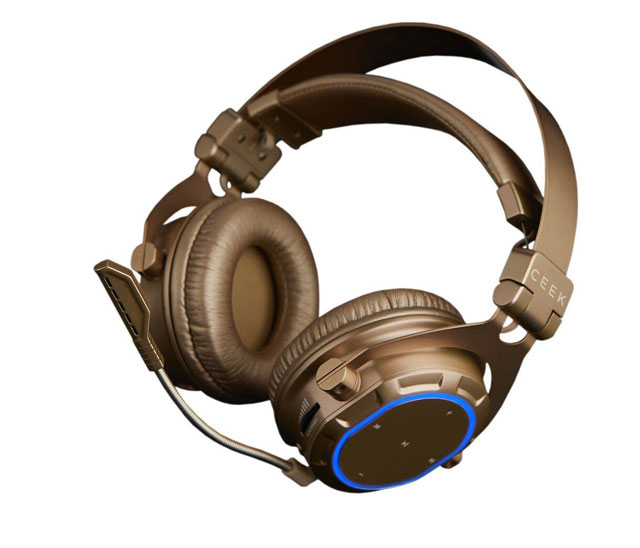
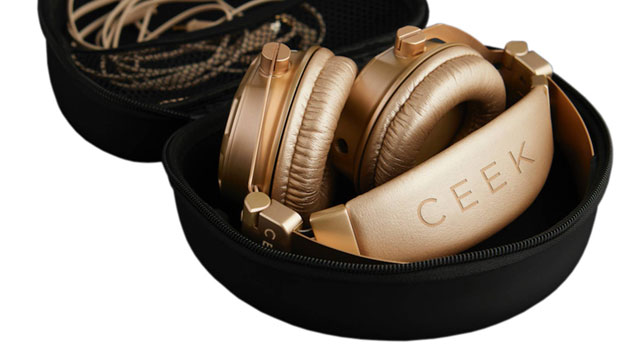




Be the first to comment on: CEEK 4D Headphones by Dave Thomas